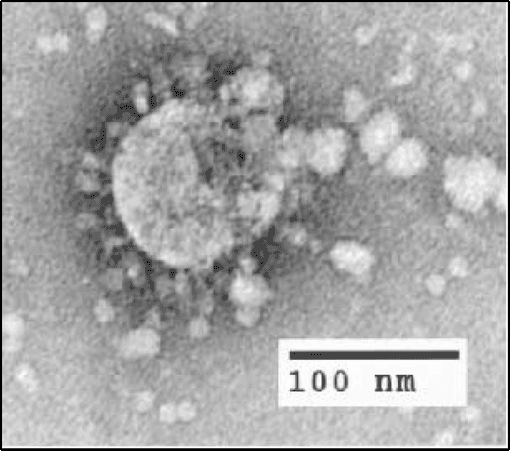As of May 1, around 3.25 million people worldwide have been infected by the current novel coronavirus.
While around one million have recovered, over 231,000 have died, making COVID-19 the biggest pandemic since the 1918-1919 Spanish Influenza, significantly altering social and economic activity worldwide.
Yet if COVID-19 is the tsunami that has overrun our beach over the last few months, the Severe Acute Respiratory Syndrome (SARS) outbreak of 2002-2004 was the roar of the ocean before the big wave arrived.
Reaching its peak in early 2003, in SARS, medical professionals based largely in China, Hong Kong, Taiwan, Canada, and Singapore were met with a respiratory illness that had never been seen before, making them unable to initially diagnose it.
“From January through the middle of March,” wrote Elisabeth Rosenthal in the New York Times in April 2003, “doctors in Asia and Canada were encountering patients carrying a virulent and high contagious germ, unaware that they were facing potentially lethal infection.”
“During that period, hundreds of health workers fell ill. During that period, well-meaning doctors were placing SARS patients in ordinary wards — as they would patients with normal pneumonia — and those patients were passing the infection on to hundreds of others.”
COVID-19 itself is a SARS-related virus strain, SARS-CoV-2. Both originally jumped from animals to humans and originated in bats found in Chinese wet markets. Likewise, Middle Eastern Respiratory Syndrome (MERS) is thought to have been passed on by camels.
In the case of SARS, horseshoe bats were likely to be the initial source, and have consequently been banned from wet markets in China.
Last week, the United States led the international community in urging China to close down its wet markets due to COVID-19. While China banned its wildlife trade earlier this year, wet markets that had been closed for several months, including in Wuhan, have since reopened. Reuters has reported they face an uncertain future.
A farmer near Foshan in Southern China was thought to be the first case of SARS infection in November 2002. In just over a year, 8096 people had been infected, with 810 dying from it.
A SARS case showed almost all the same symptoms as a COVID-19 one does today. Illness would begin with a high fever, headaches, body aches, and overall discomfort.
Respiratory struggles would sometimes occur from the beginning, while dry coughs could follow. It was reported that patients during the outbreak developed pneumonia as the illness continued. Like COVID-19, SARS was especially virulent in its second week of infection, and would also stay on some surfaces for several days. MERS shared similar traits.
In the United States, eight people are officially understood to have been infected with SARS, with virtually no community transmission.
The unusual nature of SARS meant the Chinese response started slowly, before swinging into gear. The World Health Organization and American officials were among those supporting the study of the virus.
The reactions of the nations involved provided a far-reduced version of the COVID-19 lockdowns we see today. Canada enacted a system that asked travelers returning from infected areas around the world to go into a 10-day voluntary quarantine, where they would stay at home and sleep in a separate room from other family members.
Vietnam considered sealing its northern border with China, while across the region, airports were often filled with nurses wearing PPE testing travelers for signs of the virus.
With a strict quarantine of infected travelers and a developed contact tracing system, Singapore’s response to SARS was deemed the best in 2003. After a SARS case was discovered at a vegetable market that year, they required all 2400 food sellers to enter quarantine, helping stamp it out.
Though cases were minimal in the United States, the Centers for Disease Control and Prevention (CDC), under President George W. Bush responded seriously to the virus, activating its Emergency Operations Center.
Well-meaning doctors were placing SARS patients in ordinary wards — and those patients were passing the infection on to hundreds of others.
More than 800 medical experts and support staff working on its response, along with epidemiologists dispatched, internationally.
As dangerous as it was, SARS and MERS never spread far enough to give the international community the shock that COVID-19 has this year, though, like today, efforts were started to find a vaccine. A SARS vaccine was never found before the virus was last reported in January 2004, with the WHO facing setbacks with their research.
MERS, which has 2519 people since 2012, killing 866, still has no vaccine and remains active today. The last outbreak occurred largely in Saudi Arabia in 2018. The WHO has suggested that the high mortality rate of MERS is likely only because of many more likely cases never confirmed.
The last case of SARS was found in China in January 2004. Basic response blueprints were developed by countries and non-government organizations due to SARS, meaning a few coronavirus lessons had been learned from the first time it shook us.
While COVID-19 has been multiple degrees more virulent than its older cousin, and the search for a vaccine is difficult, our previous experience with the virus will make us wiser for the future, once a tricky present is navigated.
“Nobody really predicted SARS would not continue to be a problem,” Dr. Arnold S. Monto, a University of Michigan epidemiologist told Healthline.com in March.
“But by public health measures – including isolation and proper precautions – it was possible to put the genie back in the bottle.”



